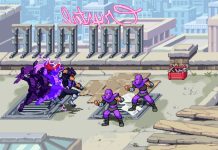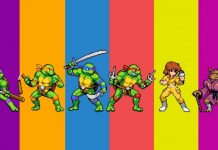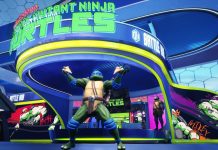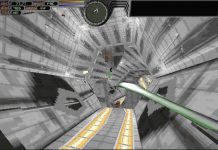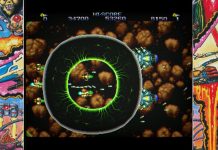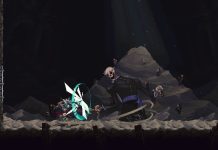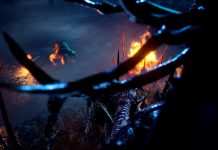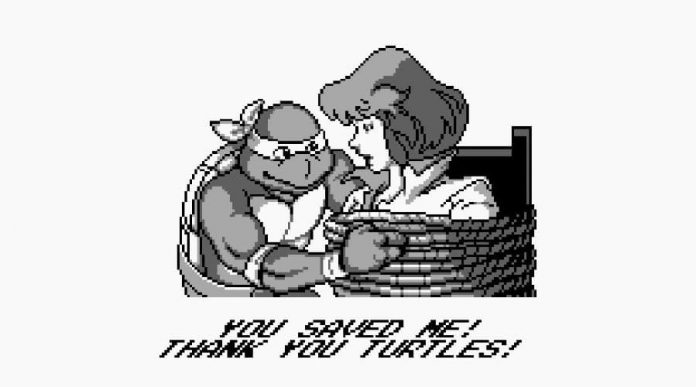
I have a weird love/hate relationship with Konami.
It’s the creator of some of my favourite franchises, such as Metal Gear Solid and Silent Hill, but in recent years its more well-known for feeding the Japanese gaming market with Pachinko machines rather than releasing any actual video games.
During the NES and SNES eras, however, it made some stellar titles with some of the world’s biggest licences. No licence was arguably bigger around this time than Teenage Mutant Ninja Turtles. Rebranded as Hero Turtles here in the UK, the four brothers trained in martial arts by a giant rat were absolutely huge, having started life as an underground comic book before making a splash as a cartoon in 1987 and a box-office smash of a movie in 1990.
Released a few months after the movie in the US and 1991 in Europe, Teenage Mutant Ninja Turtles: Fall Of The Foot Clan represents the franchise’s first foray on to Nintendo’s Game Boy handheld system. Konami had done wonders for the franchise up to this point, having released Teenage Mutant Ninja Turtles on the NES in 1989 – a good game, despite the hate it receives – and an absolutely stellar arcade cabinet that same year. Fall Of The Foot Clan was one of the first titles I owned on Game Boy, outside of the pack-in title Tetris, and despite it holding a special place in my heart, it pains me to admit that it’s not the strongest entry in the franchise.
As you might expect of the 8-bit era, Fall Of The Foot Clan is a side-scrolling fighter with platforming elements. You jump with B and attack with A, though thankfully you can swap these before starting (unless you’re a heathen). But, as much as I do enjoy this title, I can’t deny it suffers from the simplicity of its time. It’s good fun, no doubt, but only lasts about 20 minutes – nowhere near enough for even a holiday car ride. Even the plot is pretty cookie-cutter for the Ninja Turtles franchise, to the point you can break it down to three keywords: “April”, “kidnapped” and “Shredder”.

So, April’s been kidnapped by Shredder, and it’s up to you to save the “ravishing reporter” (their words). Like both the NES game and the arcade game before it, you start by picking your Turtle from the brothers four, and if one Turtle dies you have to carry on with the brothers three. They each have the weapons you’d expect: Leonardo with the katanas, Raphael wields his dual sais, Michelangelo has a pair of nunchakus and Donatello has a big ol’ stick. Each Turtle also has unlimited shuriken you can throw if you crouch and attack, which is a nice touch.
Honestly, though, I can’t pretend it really makes a difference who you pick. They all use the same sprite with only the weapon swapped out, and due to the four-tone palette of the Game Boy they aren’t even differentiated by colour, making your choice even less important. If there are any differences between the characters, such as one Turtle jumping higher or another being stronger, you’ll have completed the game before you notice.

The back of the box proclaims that the game has five levels that you’ve “never before seen”, though I can promise you, you have. The first level takes you through the sewers which, as the Turtles live in the damn sewers, is likely in every single title based on the franchise. This might be the longest level in the game as well, being broken down into five separate sections. I suppose it’s lucky that Game Boy games never had ‘first level demos’, because once you’ve played the first level you’ve unfortunately seen 90% of what the game has to offer. Once you make it to the end you face the first boss in the cool reggae beats of Rocksteady. He has a gun that fires one shot at a time. You jump his shot and hit him five times. Honestly, if you can’t make it to level two you have no purpose being here at all.
On to level two, then, and it’s the sewers again (I just want to reiterate at this point the box said “five never before seen levels”, and yet here we are). The following stages have your chosen Turtle running across the tops of trucks in a traffic jam (which is neat), into a ravine and finally into the showdown in the Technodrome. Throughout the game you’ll fight recognisable enemies such as foot soldiers, Mouser robots and Roadkill Rodneys. But you’ll also fight a bunch of mystifying new ones, including “Torpedo Timmy” (a shark/torpedo hybrid clearly spoofing Bullet Bill from Super Mario Bros.), faces that are on fire for no apparent reason, bats, fish and, er, donuts (“the frosting is murder” the manual says, explaining absolutely nothing).

Other than Rocksteady, the bosses of the stages include Bebop, Baxter Stockman in his full fly form, Shredder and, of course, Krang. Krang is a touch weak for a final boss, as it’s easy to stay in one place and stun-lock him. He’s actually an easier fight then Shredder before him, as Shredder is blessed with both a sword and the magic ability to turn around. Shredder actually ends up being the only real challenge in the game, and while a lot of people have complained about the difficulty of Teenage Mutant Ninja Turtles on the NES, the opposite is true here. Most enemies, whether their existence is comprehensible or not, go down in one or two hits but your Turtle can take a whopping eight. There are also health boosts that can be collected in the form of (you guessed it) pizza. A single slice can refill two of your health blocks and a whole pizza will refill the meter completely. It probably would have been a better experience if these had been removed, but I guess if you’re making a Ninja Turtles game you’ve just got to add some pepperoni somewhere.
If you still struggle, there are hidden bonus games throughout the levels offering a full health refill if you win. These come in three flavours: the first has you guessing what number between 0 and 999 Splinter is thinking of. You have 10 attempts at this and when you guess a number, Splinter will say either “bigger” or “smaller”. I don’t think he’s sure whose side he’s supposed to be on, as the way to win is to go smaller when he says bigger and vice versa. The second bonus stage is an oddly civilised duel against Krang, where you have to remove shuriken from three rows. You can remove as many as you like from a row, but to win you have to make it so there’s only one left on your go. The third is a simple shooting gallery, where you have to move a cursor to shoot balls that fly across the screen. It feels like it’s from a different game but while the bonus stages all feel like simple carnival games, they are a highlight and help mix up the platforming.

Graphically, the low resolution of the Game Boy screen is well optimised here, especially for an early title on the handheld. Sprites are large and detailed, and even though the Turtles all look alike, the rest of the cast are instantly recognisable. Fall Of The Foot Clan is clearly based primarily on the 1987 cartoon, featuring the art style, villain roster and even the theme song from that show, though the box art features a scene from the Archie Comics adaptation of the first movie – cross-media franchising at its finest. Much like SEGA’s Master System and Game Gear, Nintendo’s NES and Game Boy would often have the same games ported between them. I would have preferred it if the NES game could have made the leap straight to the Game Boy instead of Fall Of The Foot Clan being designed separately, but perhaps the Game Boy couldn’t manage it.
Konami went on to release two sequels on the Game Boy with Teenage Mutant Ninja Turtles II: Back From The Sewers in 1991, and Teenage Mutant Ninja Turtles III: Radical Rescue in 1993. It continued making Ninja Turtles games right through the 16-bit era and beyond, but eventually lost (or, more likely, just stopped caring about) the rights to produce Teenage Mutant Ninja Turtles games before the release of the fourth movie in 2007 – that honour fell to Ubisoft. With Tribute Games’ Teenage Mutant Ninja Turtles: Shredder’s Revenge due this year for PC and consoles, it seems scrolling Ninja Turtles fighting will soon be back in fashion.
You served us well back then, Konami. Fall Of The Foot Clan, despite its flaws and not really being talked about anymore, is still better than another Pachinko machine.

